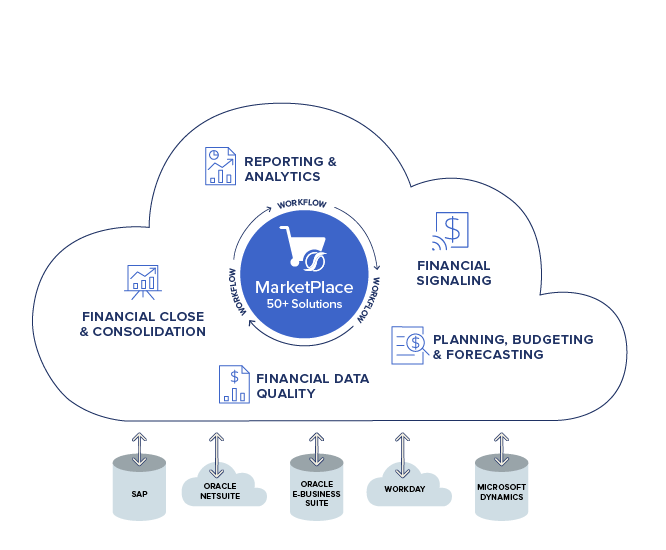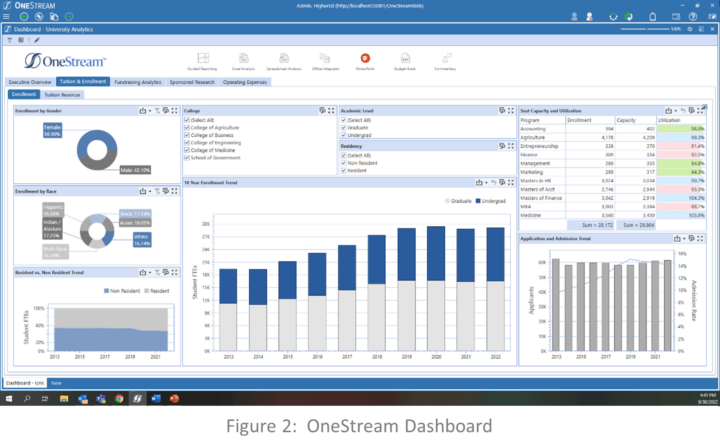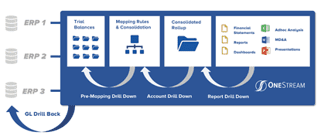Increasing Higher Education Institution Financial Reporting Confidence

In higher education institutions, Budget and Finance leaders have a key responsibility: reporting of financial, operational and compliance numbers. Producing an accurate book of record, income statement and balance sheet to represent an institution’s financial position is critical to that reporting. It’s equally important to empower decision-makers with insights from ad-hoc and periodic reports. Those insights support faster and more informed decision-making for financial planning, forecasting, and operational decisions.
Beyond the internal aspects, higher education institutions also have significant financial reporting requirements to external stakeholders. A few examples are regulatory agencies, boards of trustees/governors, grant providers, and lenders in support of debt covenants.
Errors, inconsistencies, or omissions in any reports, internal or external, can have wide-reaching, negative effects on the health of the institution and strategic decisions. In today’s dynamic economic climate, accurate reporting is more critical than ever, but many higher education institutions are still hampered by a lack of confidence in their own reporting.
Higher Education Challenges in Operational and Financial Reporting
Why are so many institutions struggling to meet stakeholder financial reporting needs with full confidence? The primary reason is the complexity of building a single source of truth from multiple data sources across the institution. Institutional entities – such as different schools, research centers, athletics, and housing – each have different purposes, funding sources, and operational requirements. Typically, each of these entities maintains their financial and operational data in separate systems using a variety of solutions and siloed spreadsheets, a process that’s drowning in complexity. Plus, Finance teams often waste tremendous time simply managing and moving data instead of focusing on what really matters: providing insightful reporting and strategic decision guidance. What’s the result?
Unfortunately, Finance teams all too often simply lose trust and confidence in their own financial reporting and planning processes. But it doesn’t have to be that way.
Addressing the Challenges and Unique Requirements of Higher Education Financial Reporting
To answer the challenges in financial reporting, Finance leaders at higher education institutions need to have good reporting capabilities while addressing a variety of stakeholder reporting needs. And at the heart of those capabilities, Finance leaders must have confidence in the timeliness and accuracy of their data.
The key to this confidence is 100% visibility from reports to sources. All financial and operational data must be clearly visible and easily accessible through a single interface with full integration to all source systems, such as Enterprise Resource Planning (ERP) tools and other systems.
Achieving this requires a modern Corporate Performance Management (CPM) solution – one with financial data quality at its core. That data then gracefully integrates with a myriad of source systems while providing powerful, yet easy-to-use reporting and financial planning & analysis capabilities.
Conquering Complexity in Higher Education Financial Reporting with OneStream

OneStream’s Intelligent Finance platform (see Figure 1) integrates with any open GL/ERP system, including those dedicated to higher education. As part of OneStream’s unified solution for financial consolidation, budgeting, planning, forecasting, reporting, analytics, and financial data quality, the built-in advanced reporting and analytic capabilities in the platform empower higher education institutions.
OneStream provides both a user-friendly interface and the option for users to accomplish data entry, analysis, and reporting all entirely through an Excel® interface. In addition to Excel®, the platform tightly integrates with Microsoft Word® and PowerPoint® to enable the creation of accessible pixel-perfect reports, ready right out of the box.

Here are some other key reporting and analytics capabilities for higher-ed teams:
Interactive Dashboards: Finance and other users are empowered by self-service, interactive dashboards (see Figure 2) that combine tables, charts, graphs, and other visualizations to provide unparalleled, immediate access to current financial and operational insights

Figure 3: Built-In Financial Data Quality Management in OneStream
Built-In Financial Data Quality: Financial data quality (see Figure 3) is a core part of the platform and provides direct integrations to source data, financial intelligence, and strict controls to deliver confidence and reliability in data quality.
Guided Reporting: Both Finance and end-users are empowered to create and manage their own powerful analytic reports with the ability to drill down on any dimension in graphs, charts, reports, and grids to get answers quickly. This capability includes a built-in report library of pre-formatted row or column sets and can instantly export reports to Excel, PDF, or any other standard format.
Excel® Integration: Users are enabled to enter and update data, quickly create reports, and conduct powerful ad-hoc analysis entirely within the Excel® interface they already know. For end, users who prefer the agility of using spreadsheets across the financial close, planning, reporting, and analysis processes OneStream’s Excel® Integration maximizes ease of use and control.
Production Reporting: Financial and operational data are unified from across the institution into a governed, flexible solution – without copying information between fragmented sources and tools. The platform also delivers key insights with detailed and pixel-perfect reports for financial, statutory, and management reporting at speed to capitalize on opportunities and mitigate risk. Users can even access 50+ pre-built web reports.
Microsoft Office Blend: OneStream’s integration with Microsoft Word, PowerPoint, and Excel enables users to combine content with OneStream reports, charts, and data content to deliver rich, visually stunning reports. Users can also automate board book and executive report creation and streamline updates with immediate data refresh capabilities for required analysis without re-work.
Conclusion
It is critical for Finance teams at higher education institutions to strengthen their ability to provide strategic guidance and insightful reporting. However, they must build trust in their data to succeed in this effort. By unifying data sources across planning and reporting processes, Finance leaders can finally move beyond manual spreadsheets and processes while setting a new foundation for collaboration and confidence in the data analyltics required to support the institution’s mission for years to come.
Learn More
Interested in learning more about how OneStream unleashes higher education Finance teams and enables trust in data and confidence in financial reporting? Download our Higher Education solution brief, or solution brief for a demonstration.
Get Started With a Personal Demo


